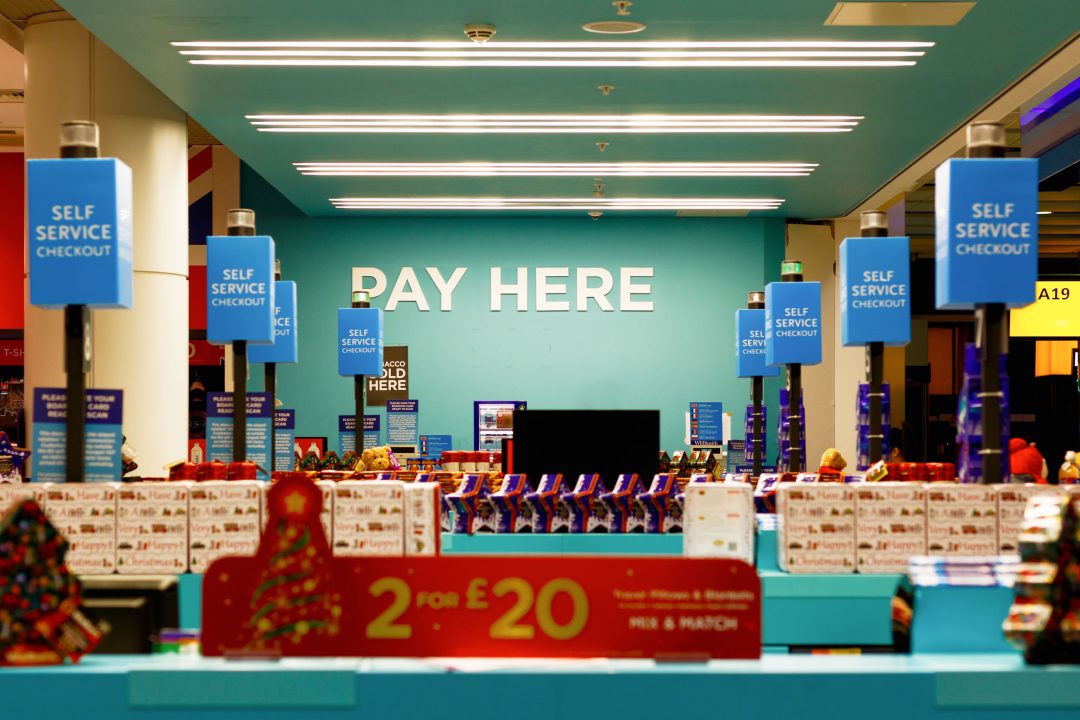Britons are stealing £3.2 billion worth of goods from self-service tills each year – that is around £5 per person a month. Unmanned self-service checkouts are a recipe for shoppers to help themselves – literally, according to new research.
Almost 25 per cent of people sampled admitted to stealing at least one item without paying. Another study shows theft from unmanned checkouts has more than doubled in the past four years.
Significantly, 40 per cent of those who stole said the reason was: ‘I knew I could get away with it’.
Will harsh fines be needed to change this behaviour? Or is the best solution a technological one?
The former strategy is being tested in Germany where a man was fined €208,000 (£184,224) for putting expensive meat through a self-service checkout as cheaper fruit, says Sky News.
He was ordered to pay the fine, based on his income, after trying to cheat the till to avoid paying €47 for veal liver.
Self-scanning is here to stay. The opportunity to reduce retail staff numbers and also ensure that a number of self-scan EPoS systems are open and ready for each customer at all times, to minimise queuing, is compelling; retailers want open merchandising and reduced costs. Especially when trading is tough for supermarkets.
This is just the start of a revolution, with Amazon Go anticipated as its culmination. Its concept store requires no checkout at all. As Amazon explains it, the checkout-free shopping experience is made possible by the same types of technologies used in self-driving cars: computer vision, sensor fusion, and deep learning:-
“Our Just Walk Out Technology automatically detects when products are taken from or returned to the shelves and keeps track of them in a virtual cart. When you’re done shopping, you can just leave the store. Shortly after, we’ll send you a receipt and charge your Amazon account.”
Major changes are happening now, as retailers are affected by a range of Innovations that trigger changes in customer behaviour, often in unpredictable ways. This includes the rise in digital touch-card payments, with many millennials – and older consumers – now not even carrying any cash for payments.
The Revolution Starts
We are at a transition stage in a new retail Industrial Revolution. Technology is introducing but failing to fully secure new patterns of customer buying behaviour; this gives rise to the temptations from self-scanning, in addition to honest errors at the point of sale.
This is forcing loss prevention, profit protection and security professionals to rapidly review their total loss strategies and inventory control, including store layouts and deployment of security staff.
The technology for detecting scan-avoidance is getting the full attention of the total loss community. This includes Transpeye software, that links transaction data with video and other systems, so that managers on site or located remotely get automatic alerts, supported by filmed evidence, when an Exception occurs.
But this still might not be enough to protect the retailer facing a different type of challenge.
How do you monitor a transaction to see, as in the case in Germany, if a low value item is scanned but a higher priced product is bagged and taken from the store? What surveillance and analysis can be done at the point of sale to confirm a physical match?
Any protection has to be proportionate. Losses must be measured against the costs of protection, including having more staff on the premises to either serve customers or observe. This is a particular issue in 2018 with the increase in the minimum wage and other inflationary wage costs.
A further strategy to consider is to train customers to stay honest. Clearly when people believe that they are not observed and unlikely to be stopped and questioned then the likelihood of theft increases. A single incident of theft can develop into a habit for an otherwise honest customer.
Strategies can include managing live transactions remotely, with supervisors monitoring and looking for patterns of behaviour that indicate fraudulent activity at the point of sale. Already with Transpeye software there is the capability to do this, with internet connection of video and data to the LodgIC intelligence centre operated by Lodge Service.
Measures might also feature further changes to store layouts and use of a range behavioural cues and signals to increase the customer’s sense of being observed.
The most likely solutions will combine technology and people solutions.
Lodge Service’s Elite Detective programme has been highly successful in using security staff in a targeted strategy to focus attention and resource on stores where loss data shows a spike in the problems of theft. This has been effective in fashion stores, and has resulted in a number of arrests and the recovery of goods, with an impressive ROI.
The Future Today
So in conclusion, this is a major period of change in the total loss sector. Hard pressed retailers need affordable security solutions to keep up with changes in buying behaviour and how it interfaces with new retail technology.
What we do know for sure is that any effective solution will have the following characteristics:-
- Data-driven: based on reliable, current statistics on losses from all sources
- Focused and proportionate: it is the Pareto Principle – focus on the 20% of criminal activity that produces the 80% of your losses
- Blended solutions: inevitably it will combine low-cost technology over the internet with the use of small teams of highly-skilled security staff, as store detectives and remote monitoring and behavioural specialists
- ROI: what retailers want is a proven return on investment, working to agreed KPIs.
All these features are available to retailers and security users today – contact Lodge Service.

